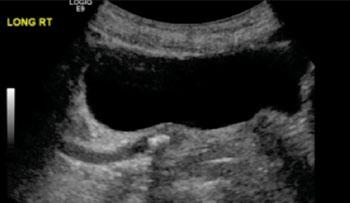Radiography

CT Scans Are No More Effective Than Ultrasound Detecting Kidney Stones
To diagnose agonizing kidney stones in hospital emergency room environments, computed tomography scans have been found to be no better than less frequently-used ultrasound exams, according to a clinical study performed at 15 US medical centers. More...02 Oct 2014
Program Devised to Supply Radiology Departments with Advanced Digital Radiography Systems
A program is designed to provide hospitals an avenue to upgrade their technology, while maximizing their existing investment. The program includes novel solutions to keep systems and technology up-to-date. More...30 Sep 2014
Dedicated Diffusion Tensor Imaging Helps Predict Effects of Mild Traumatic Brain Injury
Diffusion tensor imaging, a specialized MRI technique that identifies microstructural alterations in brain tissue, can help clinicians better predict the likelihood for poor clinical outcomes following mild traumatic brain injury compared to conventional imaging techniques such as CT, according to a new study. More...29 Sep 2014
PET-CT Imaging Forecasts Survival of Lymphoma Better Than Standard Imaging Strategies
Positron emission tomography-computed tomography imaging is more accurate than traditional CT scanning in gauging response to treatment and predicting survival in patients with follicular lymphoma, and should be used routinely in clinical practice. More...28 Sep 2014
In Other News
Analysis Tool Shows Proton Therapy Less Expensive Than IMRT for Advanced Head and Neck Cancers
Breast Radiotherapy Reduced to More Convenient Once-Weekly Regimen Option
Better Way Found to Control Lung Cancer Using Radiotherapy
3D Cone Beam CT System Designed for ENT, Oral Surgeons
Combined Radiotherapy and Drug Treatment Shown to Improve Survival for Patients with Inoperable Liver Cancer
New Cardiology Imaging Tools Include MRI Myocardial Tissue Quantification Tool and to Help Fight Cardiovascular Diseases
Personalized Intraoperative Radiation Therapy During Cancer Surgery

Transarterial Chemoembolization Contrast Agent Approved by French National Agency for Liver Cancer
Computed Radiography Features One-Click Technology
CT System Improves Outcomes While Supporting Wide Range of Patients
Lung Cancer Is Better Identified with Ultra-Low-Dose CT Than by Current X-Ray Technology
New CT Scanning Technology Is Faster, Uses Less Radiation, and Easier on the Kidneys
X-Ray Imaging System Enables Scientists to See in Real Time How Effective Treatments are for Cystic Fibrosis
Single-Fraction Radiotherapy for Palliation of Bone Metastases Improves Quality of Life
Retrofit Enables Cost-Effective Upgrade of Existing Mobile X-Ray Systems to Direct Radiography
Bone Suppression Software Used to Optimize Diagnostic Capability of X-Ray Systems
Mammography Screening Helpful for Women Over 75
New Tool Designed to Reduce Potential Future Hip Fractures
Pelvic X-Ray May Not Be Required for Children with Blunt Torso Trauma
Identifying Bladder Cancer Patients Who Could Benefit from Tumor-Softening Treatment
Imaging, Genetic Testing Reveal that Tyrolean Iceman had Genetic Predisposition for Atherosclerosis
False-Positive CT Findings Do Not Increase Worry in Lung Cancer Patients
Algorithm Found to Reduce CT Scans for Diagnosis of Pediatric Appendicitis

The MedImaging Radiology channel covers fluoroscopy, digital radiography, computerized tomography, mammography, interventional radiology, and other medical uses of X-ray imaging as well as related instrumentation, trends and safety issues.











